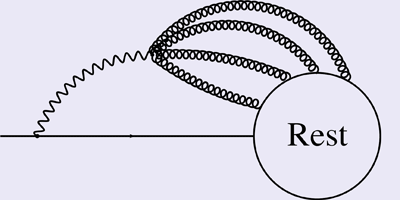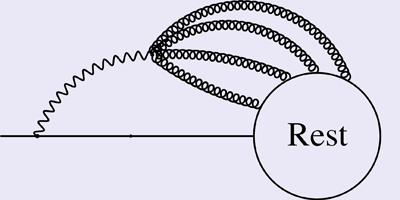Wrestling with Infinities
The absence of a consistent quantum theory of gravity continues to be the missing link between quantum mechanics and general relativity. One way to develop an effective theory of quantum gravity is to perturbatively quantize gravity, but this approach is known to create divergences (infinities) in the amplitudes that describe the scattering of gravitons—the particles that mediate gravity. There is, however, a useful mathematical connection between the structure of scattering amplitudes in perturbative quantum gravity and gauge theories of the standard model of particles. Theorists can therefore use a tool kit of methods developed for gauge theories to further develop perturbative quantum gravity.
In a paper appearing in Physical Review D, Ratindranath Akhoury at the University of Michigan in Ann Arbor and colleagues take advantage of this connection to investigate the so-called infrared divergences that appear at low energies in perturbative calculations of quantum gravity. Focusing on the scattering amplitudes of an arbitrary number of massless gravitons, they show that a class of divergencies (collinear divergencies) cancel at all orders in perturbation theory.
Ratindranath’s results shed light on the relationship between gauge theories and gravity. Viewed as results of an effective theory of quantum gravity, calculations of perturbative corrections to scattering amplitudes can be useful in gravitational phenomenology. – Alin Tirziu





